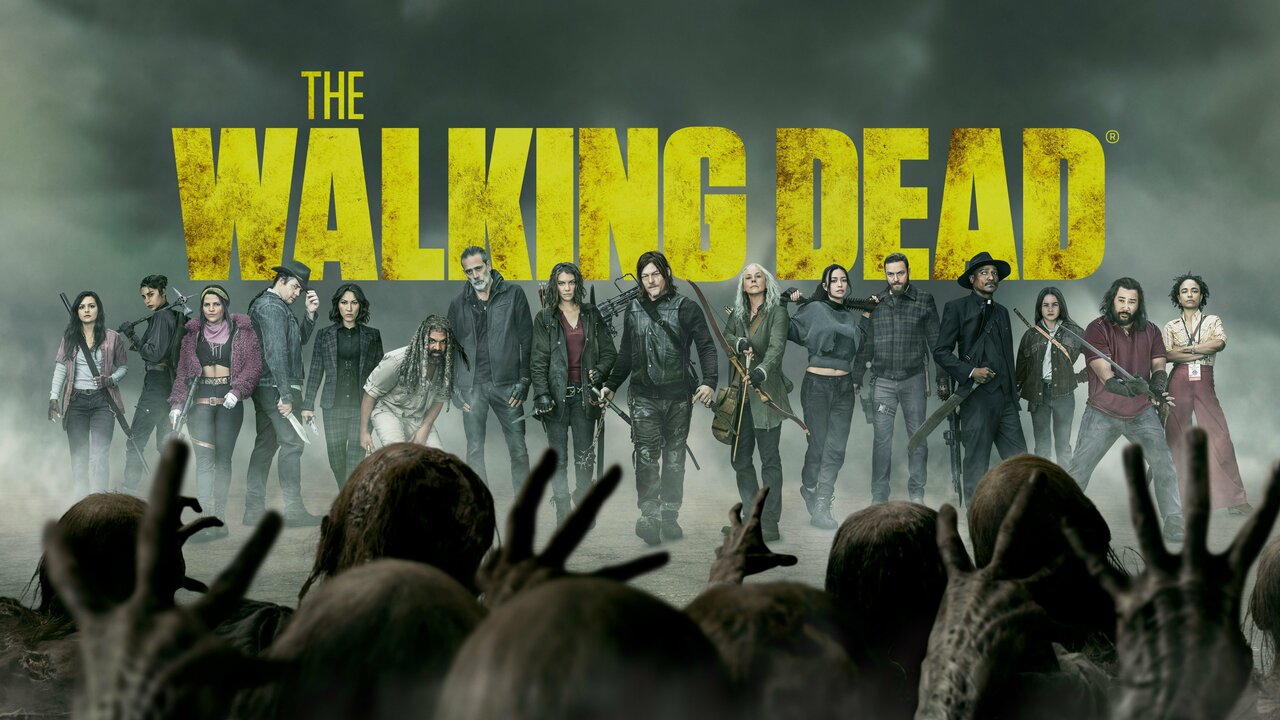Health
How are people in Delhi handling the heat wave?

Authorities in Delhi have been compelled to issue a red alert due to the extreme weather that has hampered regular activities in the capital city.
The 24-year-old gig worker Rohit Garg was admitted to the Safdarjung hospital in the capital when he started to shiver and his body temperature increased. He passed out at his final destination from exhaustion from riding his two-wheeler and delivering food packages in the intense heat that was engulfing Delhi.
“He became severely dehydrated, and his blood sugar level plummeted. He got a heat stroke, so we had to put him through rehydration therapy,” Dr. Ashutosh Singh stated.
Construction worker Jagan Das recently made a full recovery following a four-day stay in a local hospital on intravenous fluids.
Being dehydrated, I’m lucky to be alive. Ten-hour shifts in sweltering heat depleted me,” Das remarked.
Delhi in the heat
As the intense heat in Delhi persists, multiple hospitals have made plans to handle patients experiencing heat-related illnesses like fatigue and stroke. A few have established specialised clinics to care for people with heat-related illnesses.
Hospitals are required by the Delhi government to create a heat-relief action plan and make sure they are equipped to handle heat-related incidents (HRIs). 10% to 15% more patients with heat-related illnesses have visited the emergency room and OPD in the past two weeks.
Sumit Ray, the medical director of Holy Family Hospital, told DW that “our hospital staff is being sensitised for quick pick up of diagnosis and we are ready with rehydration therapy, depending on the severity of heat stroke patients.”
The India Meteorological Department issued a “red alert” on hazardous weather in the nation’s capital since there is no sign of relief from the heat anytime soon. The greatest temperature of the season thus far was recorded at Najafgarh in south Delhi, with a maximum temperature of 47.8 degrees Celsius (118 degrees Fahrenheit).
The government of Delhi ordered all schools that haven’t already closed for the summer to do so right away.
The zoo’s management have started implementing preventive measures, such hosing down animals and installing water coolers in enclosures, in response to reports of low visitation from public parks and markets.
High temperatures have an impact on
Though rising temperatures can pose major health hazards, no support is forthcoming for low-income households and outdoor workers in Delhi.
“We bear the brunt of the heatwave — dehydration and heatstroke — almost daily, and there is an absence of basic facilities from the scorching sun,” Meena Devi, a regular worker in construction
Many contractors neglect to give their workers the necessities. The well-being of employees is seriously jeopardised by hazardous working circumstances and limited access to quality healthcare services.
“It is challenging to work, but if I don’t, I won’t receive pay,” said Devi, who had a scarf covering her face and head. She continued by saying that her two small children, who she brings to the site, suffer from the heat as well.
The water supply was cut off by the local authorities last week, forcing many people to walk a painful kilometre to get water from trolleys that were loaded with buckets.
The people most impacted by this climate are the impoverished and homeless, who either work outside or sleep outside. Many turn to improvised methods to mitigate the effects of intense heat, like tarps and finding shade next to trees and parks.
“There are now more heatwave days than ever before. Rag picker Hiralal Paswan stated, “We have to contend with not only the daytime heat but also the high nighttime temperatures.”
Managing intense heat
Even political candidates and party staff take a break from outside campaigning between noon and three o’clock in the afternoon during the ongoing election campaign, even when temperatures reach as high as fifty degrees Celsius.
“When the sun is at its fiercest at this time, our door-to-door campaigning, where workers distribute pamphlets, paste stickers, and tell voters about party symbols, come to a brief halt,” Raghu Jain, an activist for the party, stated.
However, this is just a short-term relief. Heat stress is bad for the body, and a number of workers have passed out from extreme fatigue,” Jain continued.
It can be challenging to quantify the effects of heat, and estimates of the annual mortality toll from intense heat range from a few hundred to a thousand.
Dense populations of buildings and concrete surfaces raise the temperature, particularly in places lacking in greenery or trees, causing heat islands that disproportionately affect low-income and minority communities.
Wet bulb temperatures, a measurement of heat and humidity that indicates the point at which the body can no longer cool itself, would rise to such high levels that individuals directly exposed for six hours or longer would struggle to survive, according to experts, if present warming trends persisted.
According to Sunita Narain, head of the Centre for Science and Environment, “a large portion of our population is highly vulnerable to heatwaves due to the possession of fewer household amenities as well as literacy rates literacy and access to water and sanitation.”
General News Platform – https://ihtlive.com/
Entertainment News Platforms – anyflix.in
Construction Infrastructure and Mining News Platform – https://cimreviews.com/
Podcast Platforms – https://anyfm.in/
India
Covid 19 India Cases Live Updates: Active cases rise to nearly 5,000, 7 deaths reported in 24 hours
.jpg)
State-wise Breakdown
Kerala remains the most affected state, with 1,487 active cases. Delhi and Maharashtra follow, reporting 562 and 526 active cases respectively . Other states such as Gujarat, Karnataka, West Bengal, Tamil Nadu, and Uttar Pradesh have also seen noticeable increases in active cases.
Emerging Variants and Diagnostic Challenges
The resurgence is partly attributed to new variants, notably NB.1.8.1, which exhibit higher transmissibility. These variants often present with milder symptoms resembling common colds or flu, such as low-grade fever, fatigue, and cough. This similarity complicates timely diagnosis and may lead to underreporting .
Government Response and Public Health Measures
In response to the uptick in cases, health authorities have conducted review meetings and directed states to ensure readiness with essential supplies. The public is urged to maintain hygiene and seek medical attention if experiencing respiratory symptoms as the ministry closely monitors the situation .
Public Advisory
Health experts advise the public to remain vigilant. Individuals experiencing symptoms such as fever, cough, or fatigue should seek medical advice promptly. High-risk groups, including the elderly and those with underlying health conditions, are particularly encouraged to take preventive measures.
India is once again witnessing a slow but worrying uptick in COVID-19 cases, prompting health experts and officials to revisit pandemic protocols that had largely faded from public memory. As per the latest data released by the Ministry of Health and Family Welfare, the number of active COVID-19 cases in the country has climbed to approximately 4,866, marking a noticeable increase over the past few days. In the preceding 24-hour period alone, India reported 564 new cases and seven deaths attributed to COVID-related complications.
Among the deceased is a five-month-old infant, serving as a grim reminder that the virus remains dangerous across all age groups. While this resurgence is nowhere near the peak levels seen during the Delta or Omicron waves, the rapid climb from under 2,000 active cases just weeks ago has raised concerns about a potential localized outbreak or seasonal spread. Kerala, which has historically experienced higher caseloads during previous waves, currently tops the chart with nearly 1,487 active cases.
Delhi follows with 562 cases, and Maharashtra stands close behind at 526, indicating that urban and densely populated regions continue to be hotspots. Other states such as Tamil Nadu, Karnataka, West Bengal, Gujarat, and Uttar Pradesh are also reporting a steady rise in daily case counts, although they remain under the 500 mark.
What adds complexity to the current situation is the emergence of new sub-variants, notably NB.1.8.1, which appear to be driving the present surge. Unlike earlier strains, this sub-variant is said to spread faster but often manifests in symptoms that mimic those of seasonal flu — such as low-grade fever, dry cough, fatigue, and occasional sore throat — making detection difficult without targeted testing.
In many cases, infected individuals initially assume they are suffering from the common cold or seasonal allergies and delay seeking medical care, increasing the risk of community transmission. Doctors across hospitals in metro cities have reported that several patients only test positive for COVID after secondary or tertiary symptoms emerge, often resulting in a lag in treatment and isolation measures.
This diagnostic challenge is also contributing to underreporting, as people shy away from testing unless symptoms become severe. Experts warn that such complacency could lead to undetected clusters and recommend that anyone experiencing prolonged flu-like symptoms undergo testing, particularly those with underlying health conditions or weakened immunity.
In response to the rising case numbers, the Indian government has begun taking precautionary steps. Union Health Minister-led review meetings have been conducted to assess state-level preparedness.
Hospitals have been instructed to stock up on essential supplies, including PPE kits, oxygen cylinders, antiviral medication, and to ensure that ICU beds and isolation wards are functional. States have been directed to revive COVID war rooms and surveillance systems temporarily, especially in high-risk zones and transportation hubs.
District health officials in Kerala and Maharashtra have already reinstated mobile testing vans in public places like railway stations, airports, and markets to ensure early identification of potential cases.
However, authorities are treading a careful line, avoiding full-blown restrictions to prevent public panic or economic disruption, and instead focusing on enhanced monitoring and communication.
Public health advisories have also been updated. Citizens are encouraged to practice respiratory hygiene, such as wearing masks in crowded indoor spaces, regularly sanitizing hands, and maintaining physical distancing wherever feasible.
Those experiencing flu-like symptoms are advised to avoid public gatherings and seek medical consultation at the earliest. Booster vaccinations, although no longer mandatory, are being strongly recommended for vulnerable populations — including senior citizens, people with comorbidities, and frontline workers. While vaccination rates in India remain high, especially in urban centres, health authorities are now encouraging states to initiate local awareness drives to encourage booster uptake, particularly in semi-urban and rural regions.
Recent genome sequencing reports suggest that while the current strain does not lead to severe hospitalization in most healthy individuals, patients with coexisting illnesses — such as diabetes, respiratory diseases, or cardiac conditions — may face higher risks, necessitating timely intervention.
Educational institutions and offices have been advised to remain alert and monitor the health of students and staff. So far, no decisions have been made regarding closures or reverting to remote operations. However, many IT companies have begun recommending hybrid work setups once again, especially for employees showing even mild symptoms of illness.
In schools and colleges, periodic screening and health monitoring initiatives have been reintroduced. Several private hospitals in Bengaluru, Chennai, and Mumbai have reported a modest increase in the number of walk-in patients requesting COVID tests over the past week — a sign that public awareness is gradually rising. However, experts caution that proactive measures must continue if the country is to avoid a repeat of past surges.
Adding to the complexity is the simultaneous occurrence of seasonal flu outbreaks in several parts of the country, particularly in North India, where weather fluctuations are common during this time of year. Many doctors are finding it difficult to distinguish between influenza and COVID-19 without proper diagnostic tests, further burdening healthcare infrastructure.
Although hospitalizations remain relatively low, the medical community is urging people not to take the current wave lightly. They emphasize that a small percentage of infections can still evolve into serious respiratory complications requiring hospital admission, especially if diagnosis or treatment is delayed.
Public sentiment, meanwhile, remains mixed. After enduring multiple lockdowns and disruptions since 2020, many citizens are understandably fatigued by the reappearance of COVID-related headlines. While some have returned to mask-wearing and hand hygiene habits, others continue to treat the situation casually, attributing symptoms to routine flu or dust allergies. This divide poses a challenge for public health messaging, which needs to strike a balance between awareness and alarm. Social media platforms are also being monitored to curb the spread of misinformation and fake remedies that tend to gain traction during health emergencies.
In conclusion, while the number of active COVID-19 cases in India remains well below critical thresholds, the recent spike underscores the virus’s continued presence and adaptability. The emergence of new variants, combined with milder symptoms and reduced public vigilance, creates a fertile ground for future flare-ups.
Government agencies, healthcare professionals, and citizens must now work together to ensure that India’s hard-earned progress in pandemic management is not undermined by complacency. With schools open, festivals around the corner, and increased travel across the country, it is imperative that basic precautions be maintained. Timely diagnosis, voluntary isolation, mask usage, and booster vaccination are simple yet powerful tools that can help India prevent another wave from escalating into a crisis.
- Group Media Publication
- Construction, Infrastructure and Mining
- General News Platforms – IHTLive.com
- Entertainment News Platforms – https://anyflix.in/
Health
In a lavender Manish Malhotra saree, Hania Aamir sports her most gorgeous ethnic ensemble to date. View its astounding cost.

Hania Aamir serves stunning ethnic fashion inspiration in lavender Manish Malhotra tissue saree. Wondering how much it costs? Scroll down for all the details.
Hania Aamir is leaving fashion lovers spellbound with her stunning ethnic diaries. The Pakistani actor has been rocking back-to-back traditional outfits by Indian designers, turning her Insta feed into a goldmine of fashion inspo. For her latest look, the 27-year-old slipped into six yards of grace and looked straight out of a royal fairytale. Let’s break down her saree look and steal some style tips for your ethnic wardrobe. Hania Aamir stuns in lavender saree
On Monday, Hania took to Instagram and uploaded a series of gorgeous snaps accompanied by the caption “gave mermaid.” Draped in a dreamy lavender saree, the star looked absolutely breathtaking while serving some striking glam poses. Let’s take a moment to soak in her ethereal beauty.
Hania’s saree is crafted from luxurious tissue fabric and features intricately embroidered borders, showcasing stunning zari work, beads, and sequin detailing throughout. Draped to perfection, she let the pallu elegantly cascade from her shoulder, adding a regal charm to her look. She teamed it up with a matching embroidered blouse, complete with delicate handmade tassels at the back.
How much does her saree cost?
Can’t stop swooning over Hania’s gorgeous saree? We’ve got all the details you need to add this stunner to your collection. Her six yards is straight from the shelves of ace designer Manish Malhotra and is priced at ₹3,95,000.
Hania accessorised her ethnic look with dazzling diamond jewellery, including statement drop earrings, a chic choker necklace, a sleek bracelet, and a stunning ring adorning her finger. Her dewy makeup featured shimmer eyeshadow, winged eyeliner, mascara-coated lashes, blushed cheeks, a luminous highlighter, and glossy nude lipstick. With her long, luscious tresses left loose in a side partition, she perfectly finished off her look.
Group Media Publications
Entertainment News Platforms – anyflix.in
Construction Infrastructure and Mining News Platform – https://cimreviews.com/
General News Platform – https://ihtlive.com/
Health
Knowing the main distinctions and risks between HMPV and COVID-19.

As India logs 5 cases of HMPV, here’s all you need to know about how human metapneumovirus is different from Covid-19 and warning signs to watch out for.
HMPV virus is not a novel virus – it was first isolated in 2001 by Van den Hoogen and her colleagues in Netherlands in the nasopharyngeal secretions of children with respiratory tract infections. The virus was named human metapneumovirus because it was a metapneumovirus that used humans as a host.
The human metapneumovirus (hMPV) is a common respiratory virus that typically causes mild cold-like symptoms. Studies show it has circulated in human populations since the 1970s, though it was first identified by scientists in 2001.
The virus accounts for 4-16% of acute respiratory infections globally, with cases usually peaking between November and May. While most adults have developed immunity through previous exposure, hMPV can cause more severe symptoms in infants encountering it for the first time and in people with weakened immune systems.
In an interview with HT Lifestyle, Dr Sangeeta V Budur, Consultant – Paediatrics and Paediatric Intensive Care at Aster RV Hospital, shared, “It is known to cause a range of illnesses from mild upper respiratory infections to severe pneumonia , bronchiolitis and acute respiratory distress syndrome. About 5 to 25% of the acute pediatric lower respiratory tract infections are associated with HMPV. The viral outbreaks peak in winter and spring season in northern hemisphere and June and July in southern hemisphere.”
Who are the vulnerable population?
Dr Sangeeta V Budur revealed, “No age group is immune to the virus, reinfection occurs throughout the life but subsequent infections are mild. Infants, children under 2 years, elderly, Immuno-compromised persons or those with underlying chronic medical conditions are more vulnerable to the severe disease. The HMPV infection appears to be ubiquitous, as virtually all children are exposed by the age of 5 years.”
How does it spread?
According to Dr Sangeeta V Budur, just like any other respiratory illness, HMPV spread via respiratory droplets i.e. coughing, sneezing or contact with infected secretions.
How is it different from Covid -19 ?
Dr Sangeeta V Budur informed, “Both viruses cause minor respiratory symptoms in most of the infected people but Covid -19 has a broader spectrum of symptoms involving multiple body systems and a higher potential for systemic complications. The comparison between the two viruses is difficult though the spread is through the droplets via the respiratory route in both. HMPV is less transmittable and has less severe symptoms as compared to Covid-19.”
What are the symptoms of HMPV virus?
Dr Sangeeta V Budur answered, “Most of the symptoms are mild flu like lasting 5- 7 days requiring outpatient visits. But in children under five , HMPV is responsible for 3-10% of hospital admissions. Among the hospitalized children high grade fever, respiratory distress, wheezing rare the predominant symptoms.”
What are the respiratory illnesses caused by HMPV?
As per Dr Sangeeta V Budur, HMPV is mainly known to cause upper respiratory tract infection in most of the children but bronchiolitis, severe pneumonia, acute respiratory distress syndrome in few which require hospitalization, oxygen therapy including mechanical ventilation.
How to diagnose HMPV infection?
Dr Sangeeta V Budur highlighted, “Diagnosing HMPV based solely on symptoms is difficult, as it mimics other respiratory infections like respiratory syncytial virus( RSV) and influenza. PCR testing on nasopharyngeal secretions for detecting HMPV RNA is the gold standard. In India, surveillance systems like ICMR and the Integrated disease surveillance Programme( IDSP) regularly test for respiratory viruses including HMPV.”
What are treatment options for HMPV?
There is no specific antiviral drug available. Dr Sangeeta V Budur said, “Treatment is mainly symptomatic and supportive with antipyretics and antihistaminics. Hospitalised children may need oxygen therapy , nebulizations and rarely mechanical ventilation among the severely infected.”
What are preventive measures for HMPV?
As of now there is no targeted therapy/vaccine available for HMPV. Dr Sangeeta V Budur suggested, “Proper hand hygiene – washing hands frequently with soap and water for at least 30 seconds. Cough etiquette such as covering the nose and mouth while sneezing and coughing, wearing a mask can limit the spread of the virus. Avoiding close contact with infected individuals, regularly disinfecting touched surfaces are additional measures.”
Group Media Publications
Entertainment News Platforms – anyflix.in
Construction Infrastructure and Mining News Platform – https://cimreviews.com/
General News Platform – https://ihtlive.com/
-
Tech4 months ago
Best Zebronics Bluetooth speakers you can buy today for an unmatched audio experience
-

 India2 years ago
India2 years agoNew Season 8 The Walking Dead trailer flashes forward in time
-

 India2 years ago
India2 years agoThe afternoon briefing revealed that 97.26% of the ₹2000 notes were returned, and the Israeli Prime Minister committed to war goals.
-

 World12 months ago
World12 months agoMichigan splash pad attack: A couple was shot seven times in total while defending their two small daughters.
-

 India2 years ago
India2 years agoSrikanth Venkatachari is appointed as the new chief financial officer by Reliance Industries.
-

 India2 years ago
India2 years agoPM Modi’s Three-Nation Tour Begins with a Traditional Welcome in Papua New Guinea
-

 Special 365 days3 years ago
Special 365 days3 years agoFlag Day of India
-

 India8 years ago
India8 years agoThe 9 worst mistakes you can ever make at work









.jpg)
%20(1).jpg)